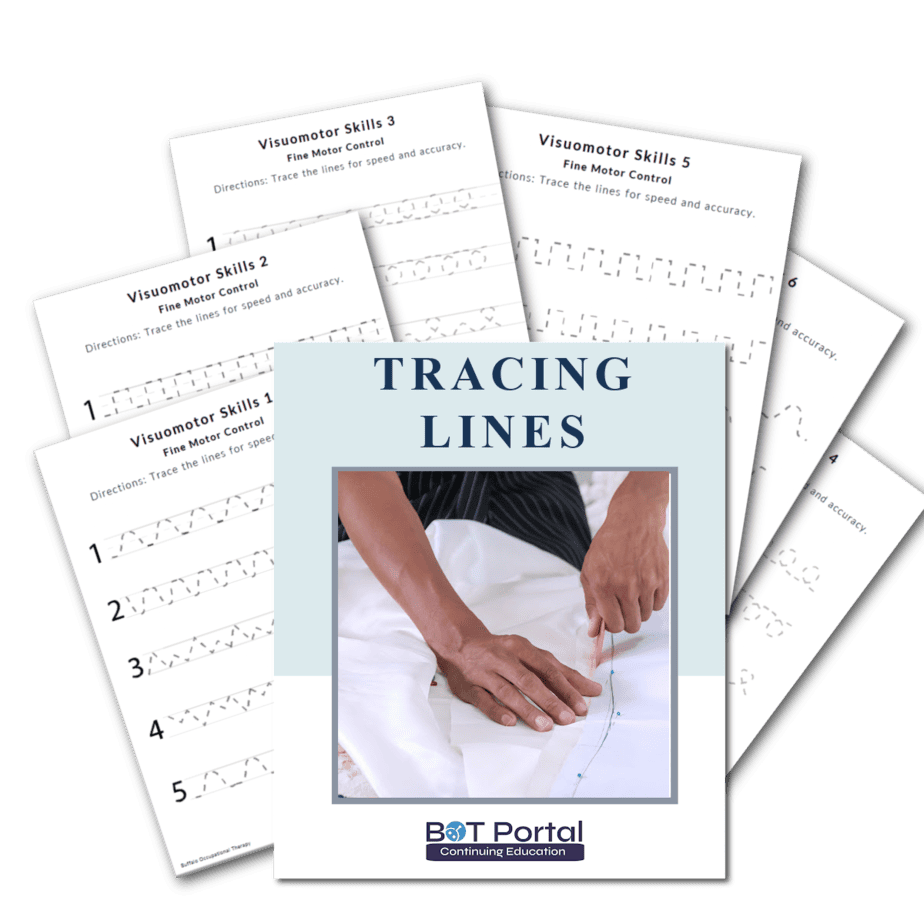Description
Tracing Lines – Visuomotor Skills
Handwriting progression worksheets that involve tracing lines allow you to take your client from simple lines to advanced written flows in preparation for print and cursive written communication.
More Information:
Tracing Lines worksheets focusing on visuomotor skills are valuable resources in occupational therapy, especially for individuals aiming to enhance their hand-eye coordination and fine motor abilities. Visuomotor skills involve the coordination between visual perception and motor movements, essential for tasks such as handwriting, drawing, and manipulating objects.
These worksheets typically feature a variety of lines, shapes, or patterns for individuals to trace, challenging them to replicate the lines with accuracy and control. By engaging in activities that involve tracing lines, clients work on visual tracking, spatial awareness, and motor planning—key components of visuomotor skills.
Tracing Lines worksheets target specific brain regions involved in visuomotor integration, including the parietal lobe, occipital lobe, and frontal lobe. The parietal lobe plays a crucial role in spatial processing and hand-eye coordination, assisting individuals in interpreting visual information and translating it into precise motor movements.
The occipital lobe, located at the back of the brain, is responsible for processing visual stimuli received from the eyes. It plays a vital role in recognizing lines, shapes, and orientations, providing the foundation for accurate visuomotor perception.
Furthermore, the frontal lobe contributes to motor planning and execution, enabling individuals to coordinate hand movements and replicate lines with precision. By engaging in activities that involve tracing lines, individuals activate these brain regions, promoting neural connections and facilitating the development of visuomotor skills.
What’s included?
- 6 pages of tracing lines activities
Other Helpful Links:
Check out BOT Portal: Resource Site for Occupational Therapy Students and Practitioners




